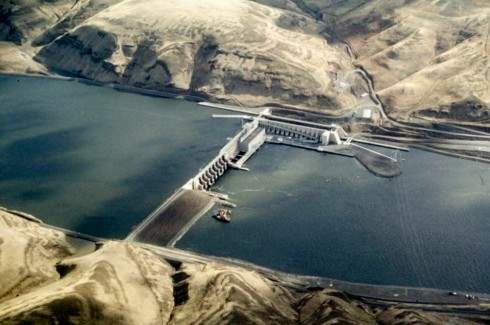forum
library
tutorial
contact

New Analysis on
Lower Snake River Dams
by TJ Martinell
The Lens, August 22, 2019
|
the film forum library tutorial contact |

|
New Analysis on
by TJ Martinell
|
 As efforts continue in favor of breaching the lower Snake River dams to aid salmon and Southern Resident Killer whale recovery, NOAA Fisheries -- also known as the National Marine Fisheries Service -- is close to finishing a new analysis of the dams as part of an Environmental Impact Statement (EIS) prepared by three federal agencies.
As efforts continue in favor of breaching the lower Snake River dams to aid salmon and Southern Resident Killer whale recovery, NOAA Fisheries -- also known as the National Marine Fisheries Service -- is close to finishing a new analysis of the dams as part of an Environmental Impact Statement (EIS) prepared by three federal agencies.
Previous studies done by NOAA Fisheries, including a biological opinion and its recovery plans, have concluded that removing the dams is unnecessary to help salmon and orca populations. The latest analysis looked at the effects of the dams and removing them in order to improve fish survival rates. The EIS process was started in 2016 as part of a U.S. Court order; later that year, a U.S. District Court judge issued a ruling which stated that the new EIS "may well require" breaching the dams. The EIS is expected to be completed in 2020.
Although it has yet to be released, NOAA Fish Ecology Director Rich Zabel told Lens the new conclusions won't be much different than past studies as to whether the dams should be breached.
"I would say at this point we're not recommending it," he said. "I would say we are interested in exploring habitat restoration. Breaching the dams would take an act of Congress, so I think in the short run we're interested in pursuing as many activities outside of breaching dams."
He added that while there may have been "various degrees of support" for removing the dams, none of their previous studies have ever said it's necessary or required.
The analysis comes as the state legislature earlier this year approved a $750,000 study that would also examine the effects of removing the dams. Environmentalists and some tribes argue the dams impede fish passage and are contributing to their dwindling populations. According to Governor Jay Inslee's Salmon Recovery Office, several endangered salmon species include the Snake River spring and summer Chinook, and their populations have not improved. Other endangered salmon that migrate through the Snake River include Steelhead, which is showing signs of progress, along with the fall Chinook which is approaching state recovery goals. The diminished amount of salmon is consequently blamed by some for the shrinking number of Southern Resident killer whales.
However others, including NOAA Fisheries, highlight other factors harming both killer whales and salmon, such as sea lions. Others point to the electricity the dams provide -- seven percent of the total state production -- along with the agricultural benefits. Removing the dams would affect roughly 350,000 acres of private-sector agricultural lands and prevent the use of barges to transport 40 percent of the nation's wheat production. There is also the cost to remove the dams; the Bonneville Power Administration (BPA) estimates it would take $1 billion to do so.
Recently, an ECONorthwest study examined the tradeoffs of removing the dams, claiming that the agricultural impacts could be mitigated, though its conclusions are disputed by Washington Policy Center Agricultural Director Pam Lewison.
Meanwhile, several public utility district (PUD) commissions such as Grays Harbor PUD and Cowlitz PUD have thrown support behind the dams. The most recent resolution in favor of the dams came in July from Mason PUD 3.
Related Pages:
Utilities in Support of Lower Snake River Dams by TJ Martinell, The Lens, 6/7/19
learn more on topics covered in the film
see the video
read the script
learn the songs
discussion forum
